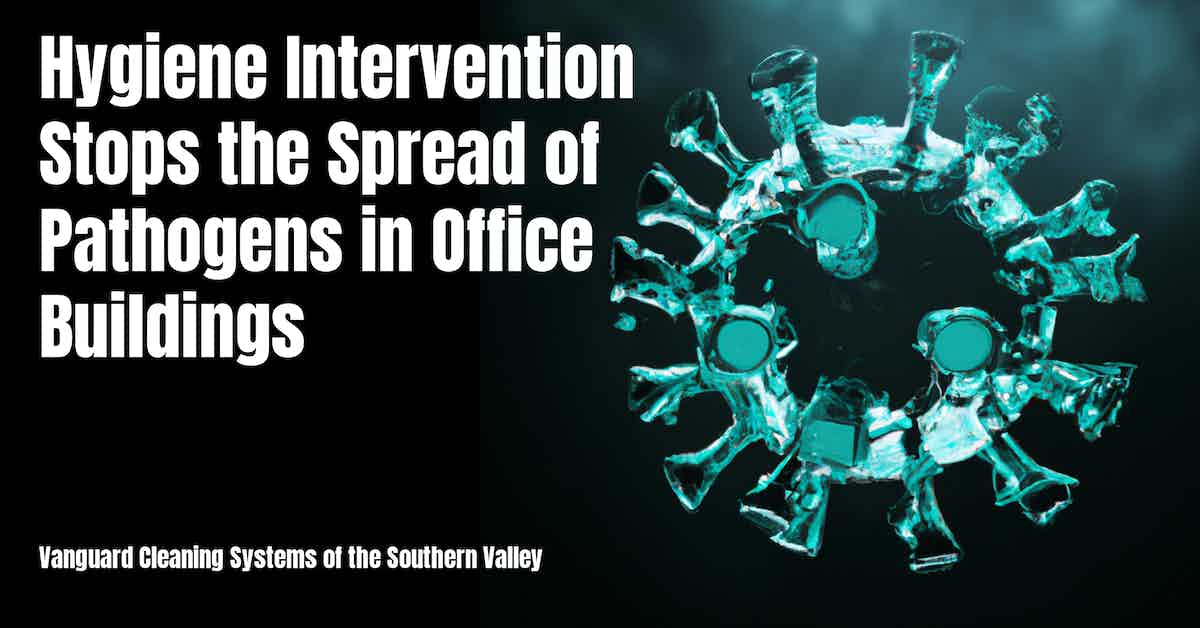The ongoing threat of infectious diseases and pandemics has made it imperative for businesses to take appropriate measures to protect their employees and visitors from germs.

Pathogens in Office Buildings
The Earth contains countless microbial life--most of which has yet to be identified.
They exist in nearly every known environment, including on and in humans and the environments we occupy.
Of the one trillion estimated microbial species on the planet, approximately 1,400 have been characterized as human pathogens.
Pathogens are generally defined as;
[...] an organism causing disease to its host, with the severity of the disease symptoms referred to as virulence.
Pathogens are taxonomically widely diverse and comprise viruses and bacteria as well as unicellular and multicellular eukaryotes.
Every living organism is affected by pathogens, including bacteria, which are targeted by specialized viruses called phages.
Q&A: What are pathogens, and what have they done to and for us?
...and fall into one of two categories:
- Facultative Pathogens - Organisms capable of exploiting various niches for reproduction, including the host organism. They include many of the most problematic hospital-acquired bacteria in the antimicrobial resistance pandemic. In some cases, a distinction is made between facultative and accidental pathogens, with the latter referring to organisms that only occasionally infect weakened or immunocompromised hosts. Examples of accidental pathogens include Neisseria meningitidis and E. coli.
- Obligate Pathogens - Organisms that require a host to fulfill their life cycle. All viruses are obligate pathogens, as they depend on the host organism's cellular machinery for reproduction. Obligate pathogens can be found among bacteria, such as those that cause tuberculosis and syphilis, protozoans, such as those that cause malaria, and macroparasites.
Humans combat the onslaught of pathogenic microbes through hygiene intervention strategies--measures aimed at reducing the spread of pathogens in public facilities.
The objective of facility hygiene intervention is to create a clean and healthy environment for people by reducing the risk of exposure to infectious diseases.
Hygiene Intervention Reduces Pathogen Transmission
Implementing hygiene intervention strategies in public facilities has several demonstrated advantages, including:
- Improved occupant health.
- Reduced absenteeism and;
- Lower risks of pathogen transmission.
According to the results of a 2019 study published by ScienceDirect;
Full implementation of the OWIs (office wellness intervention) resulted in significantly reduced phage concentrations per surface area on communal surfaces, office fomites, and hands, in an office environment.
It has been reported that communal shared items in an office setting such desks and computer keyboards have a potential to be fomites, resulting to transmission of infections.
Viral transmission routes are very diverse, including indirect contact with contaminated fomites, aerosol transmissions such as sneezing, and direct contact with an infected person, and all these are common in an office workplace setting.
Full implementation of the disinfection protocol and use of HHB (hand hygiene) will likely reduce exposure to human viruses in indoor environments due to decreased concentrations on surfaces and hands.
Impact of a hygiene intervention on virus spread in an office building
Hygiene Intervention Strategies
The objective of hygiene intervention is to create a clean and healthy environment for people, reducing the risk of exposure to infectious diseases.
These measures commonly include:
- Hand hygiene - One of the most effective methods of preventing the spread of pathogens. This can be achieved through regular hand washing with soap and water or alcohol-based hand sanitizers.
- Surface disinfection - Cleaning and decontaminating high-contact surfaces, such as doorknobs, light switches, and countertops, as well as high-risk facility areas, such as restrooms, cafeterias, and breakrooms.
- Ventilation - Helps to reduce the concentration of pathogens in the air and improve indoor air quality, typically through the use of mechanical air flow (HVACs), HEPA air filters, and opening windows to allow for natural ventilation, and;
- Personal protective equipment - The use of personal protective equipment, such as masks and gloves, is also an essential aspect of hygiene intervention in public facilities and helps to reduce the risk of exposure to pathogens, particularly in situations where close contact with others is unavoidable.
Takeaway
Hygiene intervention is a vital step in preventing the spread of pathogens in office buildings.
The advantages of implementing enhanced facility hygiene measures include:
- Reduced risk of infection.
- Improved employee health and well-being.
- A positive reputation for the company and;
- Cost-effectiveness.
As large-scale outbreaks continue to impact the world, the importance of hygiene intervention in the workplace has never been more apparent.
Businesses must take the necessary steps to protect their employees and visitors by implementing hygiene interventions in their facilities.
Onboarding and managing the requisite labor and material resources necessary to ensure the highest standards of cleanliness are achieved and maintained may prove cost-prohibitive for many organizations.
Outsourcing is a proven method for onboarding highly in-demand cleaning and disinfection services and experience for a fraction of the price of maintaining a similar service in-house.
If you would like more information regarding the effectiveness of high-performance infection prevention and control measures, or if you would like to schedule a free, no-obligation on-site assessment of your facility's custodial needs, contact us today for a free quote!
In Bakersfield, CA, call (661) 437-3253
In Fresno, CA, call (559) 206-1059
In Valencia, CA, or Santa Clarita, CA, call (661) 437-3253
In Palmdale, CA, or Lancaster, CA, call (661) 371-4756

